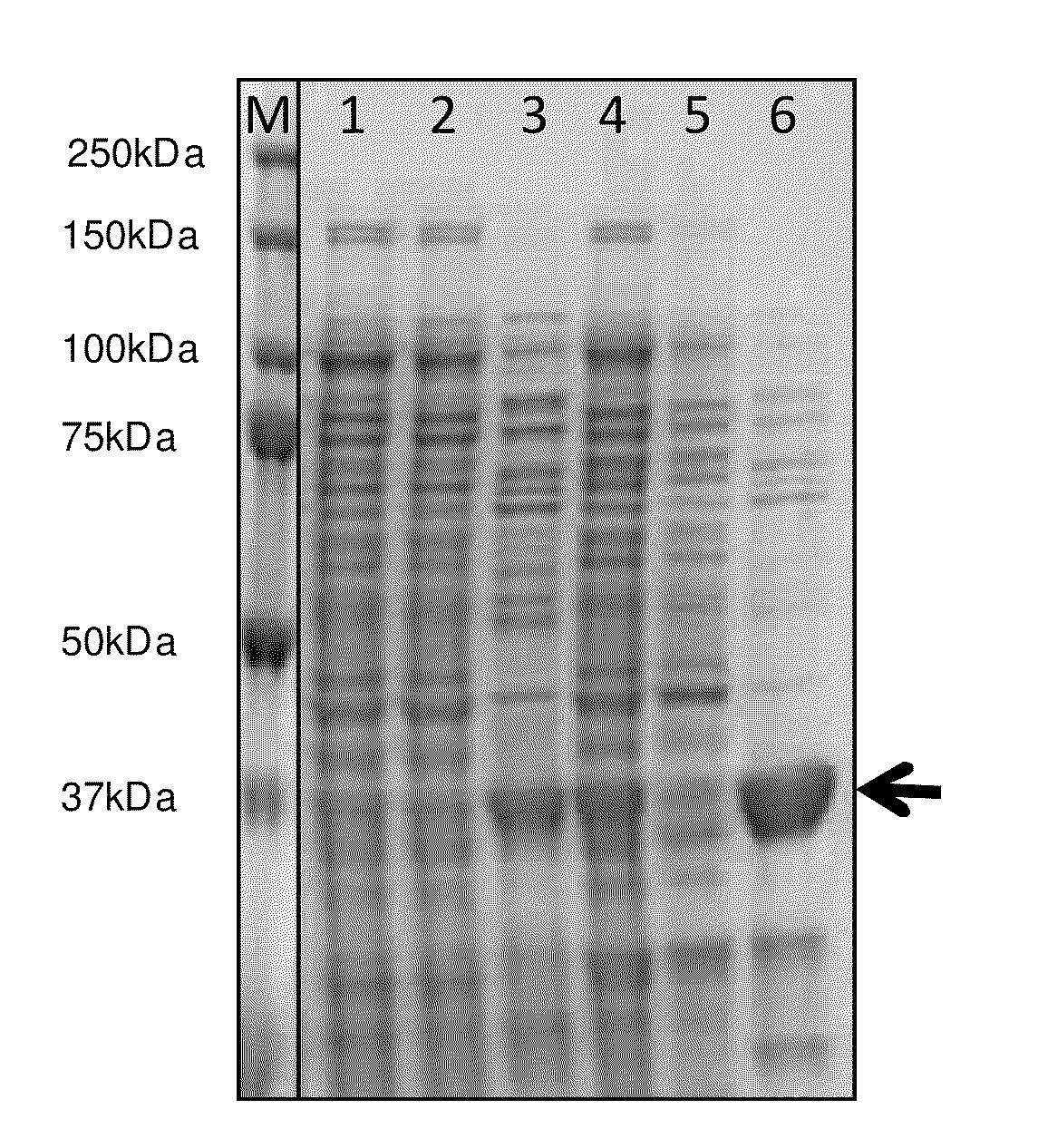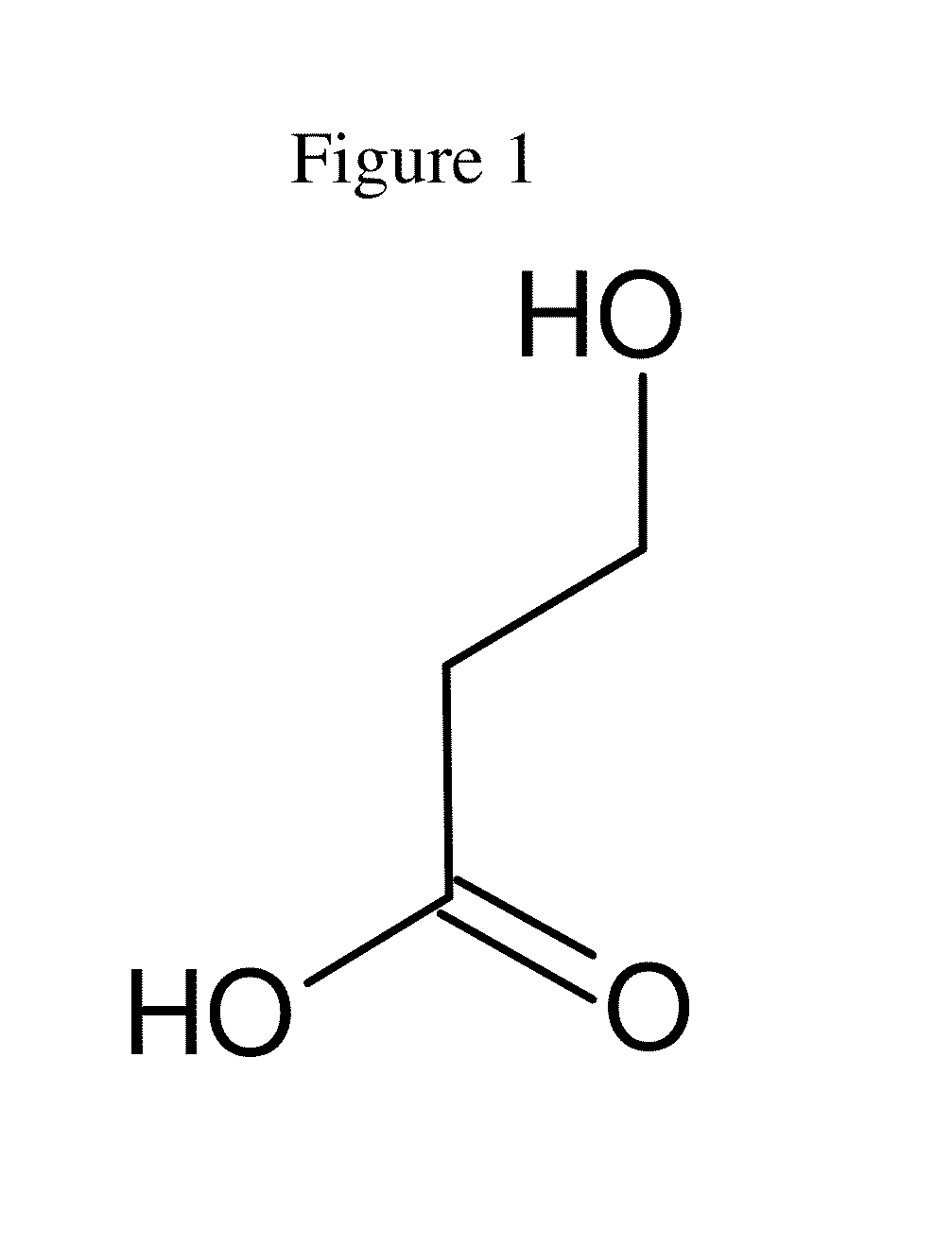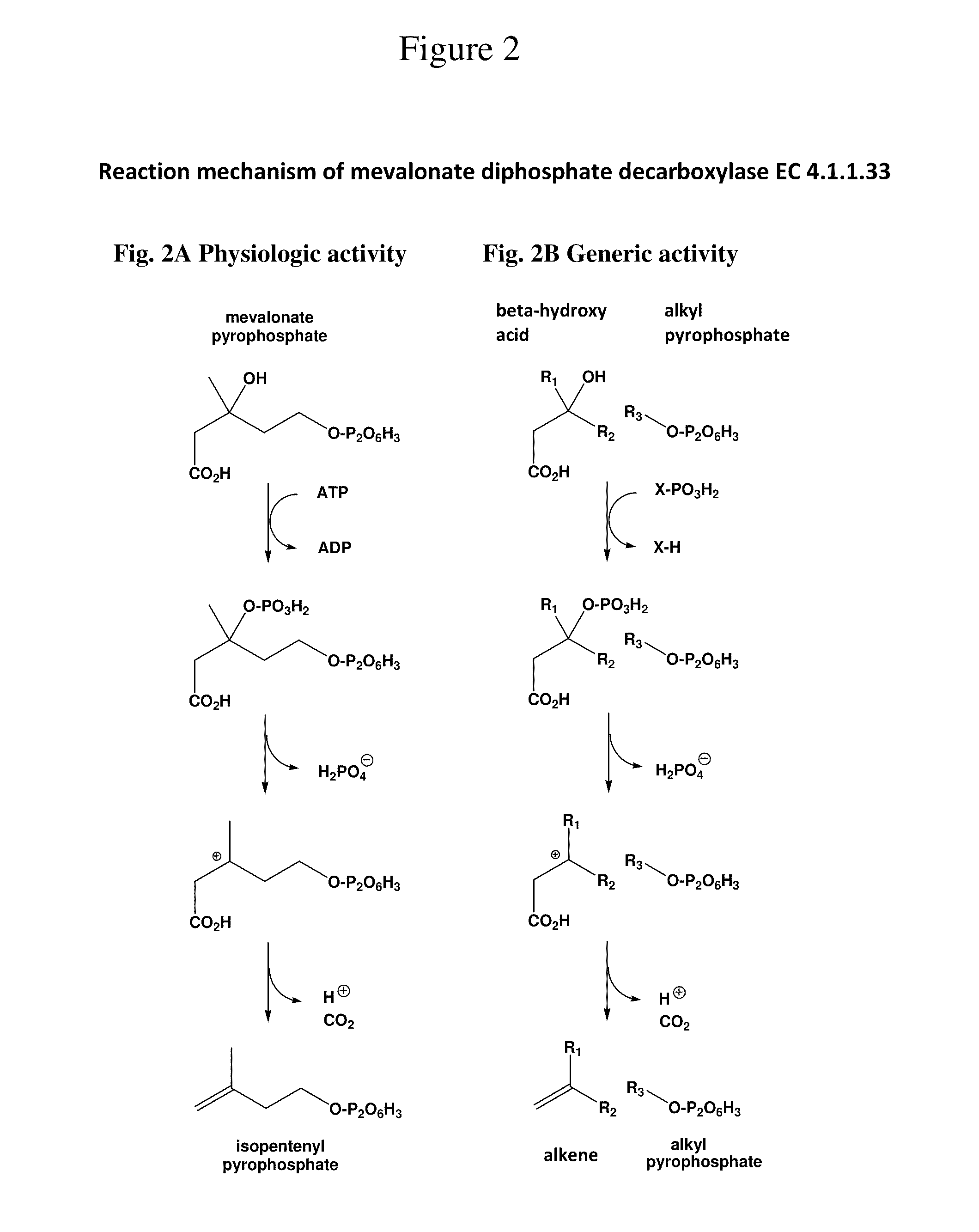Production of alkenes by enzymatic decarboxylation of 3-hydroxyalkanoic acids
- Summary
- Abstract
- Description
- Claims
- Application Information
AI Technical Summary
Benefits of technology
Problems solved by technology
Method used
Image
Examples
example 1
Cloning and Expression of Several MDP Decarboxylases
[0129]The gene encoding MDP decarboxylase of Saccharomyces cerevisiae is synthesized from overlapping oligonucleotides and cloned in a pET plasmid (Novagen) allowing expression in bacteria. Said plasmid is then transformed by electroporation into bacterial strain BL21 (Invitrogen). The bacteria are streaked on a Petri dish containing ampicillin and incubated at 37° C. The next day, a bacterial colony is randomly selected and used to inoculate 50 ml of LB medium containing ampicillin. The culture is incubated for 24 h while shaking, after which the culture is centrifuged, the bacteria lysed by sonication, and a total protein extract prepared. An aliquot of the extract is loaded on an electrophoresis gel together with a protein extract from the same strain which has not been transformed, and with molecular weight markers. The lane corresponding to the transformed strain contains a single band of approximately 30 kD, which corresponds...
example 2
Measuring the Activity of the Protein Extracts Towards 3-hydroxy-3-methylbutyrate
[0130]3-hydroxy-3-methylbutyrate (Sigma, reference 55453 under the name β-hydroxyisovaleric acid), is suspended at a concentration of 10 g / l. Mevalonate diphosphate is synthesized from mevalonolactone and other reagents (Sigma) by the conventional method and resuspended at a concentration of 10 g / l.
[0131]Six chromatography vials are prepared. 50 μL buffer containing 50 mM Bistris / HCl 1 mM dithiothreitol, 10 mM MgCl2 and 5 mM ATP are added to each vial.
[0132]Vials 1 and 4: 5 μl water are added (no substrate).
[0133]Vials 2 and 5: 5 μl of the mevalonate diphosphate preparation are added (positive control).
[0134]Vials 3 and 6: 5 μl of the 3-hydroxy-3-methylbutyrate (HIV) preparation are added.
[0135]Vials 1, 2 and 3: 5 μl of water are then added (no enzyme).
[0136]Vials 4, 5 and 6: 5 μl of the enzyme preparation described in example 1 are added.
[0137]Vials are sealed with a septum and crimped. All vials are i...
example 3
Optimization of Reaction Conditions by Using a Cofactor
[0138]The same reaction as that described in vial 6 of the previous example is carried out, but in one of the samples, ethyl diphosphate, synthesized to order, is added as cofactor.
[0139]In this example, three vials are used. The first contains buffers, ATP, and the enzyme extract in the amounts described in the previous example. The second vial contains the same components, but additionally contains 3-hydroxy-3-methylbutyrate in the amounts described in the previous example. The third vial contains, in addition to 3-hydroxy-3-methylbutyrate, 10 μl of 10 mg / l ethyl diphosphate.
[0140]As in the previous example, isobutylene formation is measured by gas chromatography with infrared or flame ionization detection. It is found that when ethyl diphosphate is present, the amount of isobutylene produced over time is markedly higher.
PUM
| Property | Measurement | Unit |
|---|---|---|
| Fraction | aaaaa | aaaaa |
| Fraction | aaaaa | aaaaa |
| Fraction | aaaaa | aaaaa |
Abstract
Description
Claims
Application Information
 Login to View More
Login to View More - R&D
- Intellectual Property
- Life Sciences
- Materials
- Tech Scout
- Unparalleled Data Quality
- Higher Quality Content
- 60% Fewer Hallucinations
Browse by: Latest US Patents, China's latest patents, Technical Efficacy Thesaurus, Application Domain, Technology Topic, Popular Technical Reports.
© 2025 PatSnap. All rights reserved.Legal|Privacy policy|Modern Slavery Act Transparency Statement|Sitemap|About US| Contact US: help@patsnap.com



